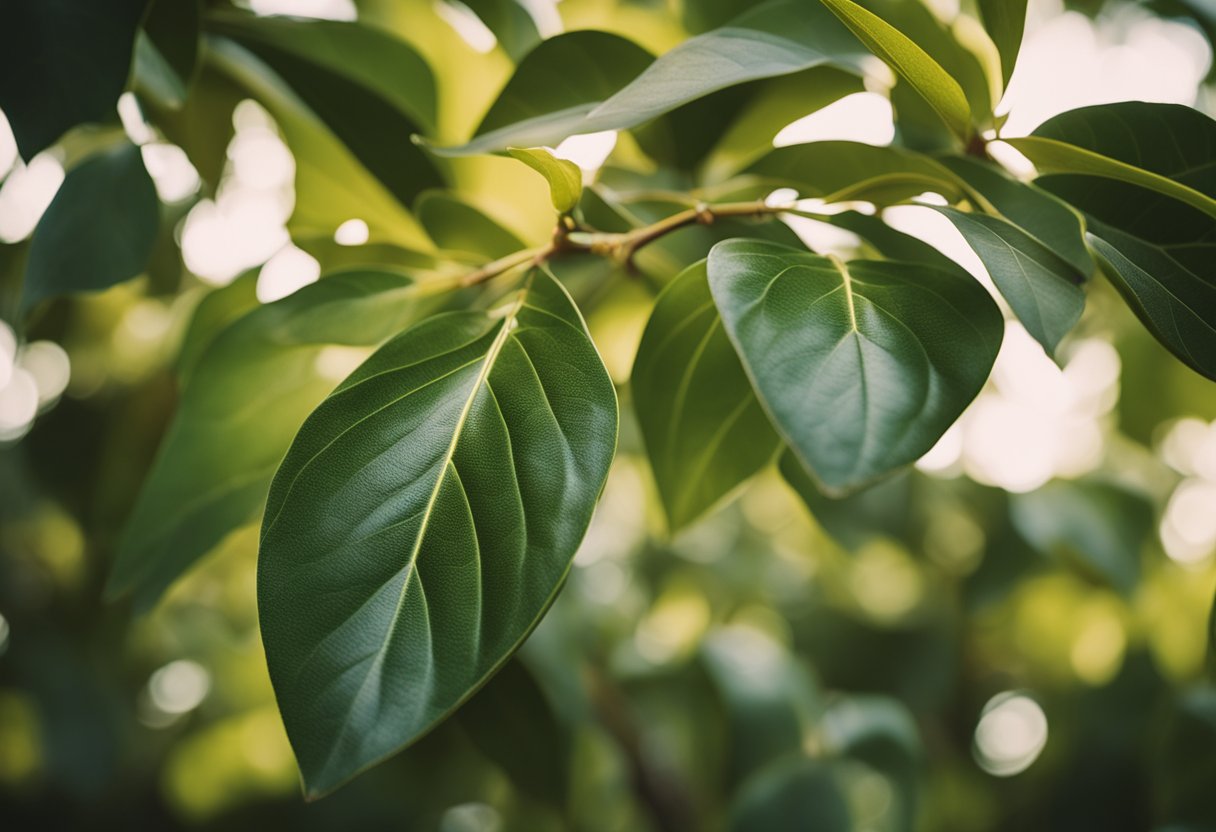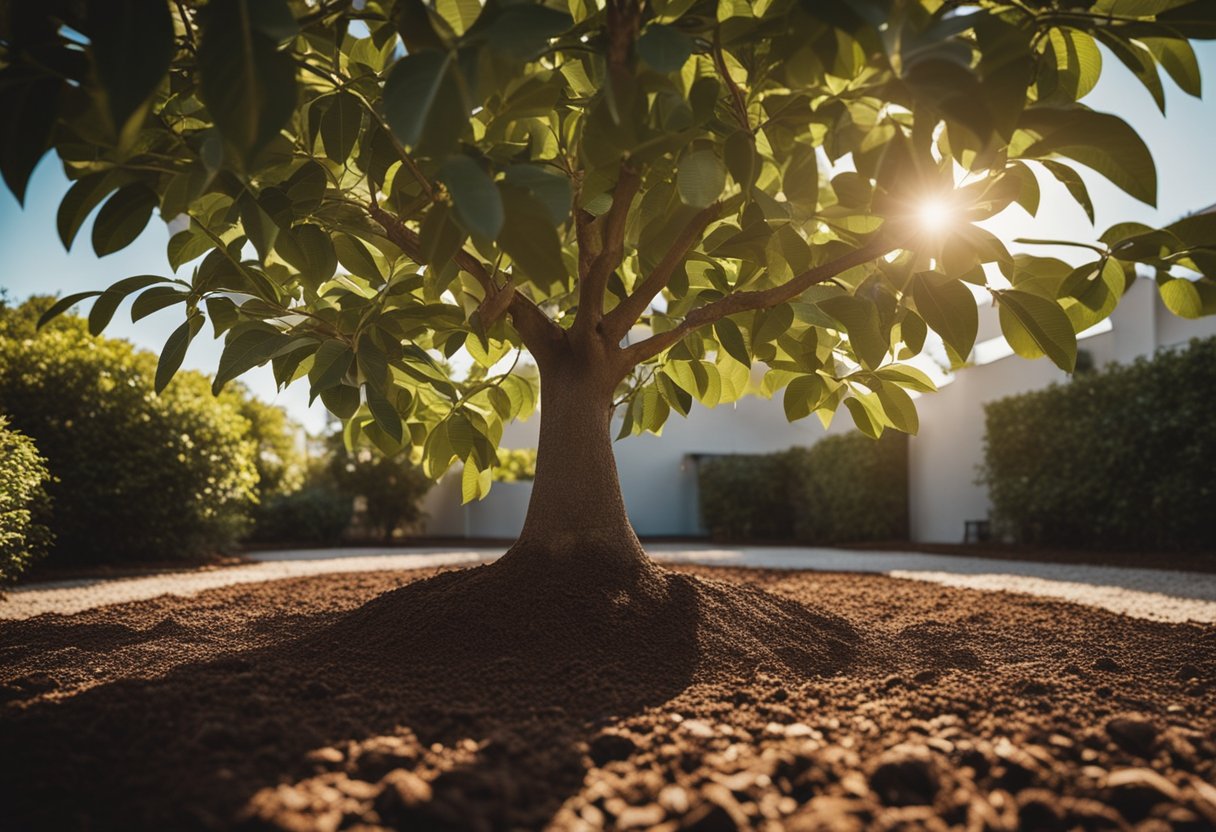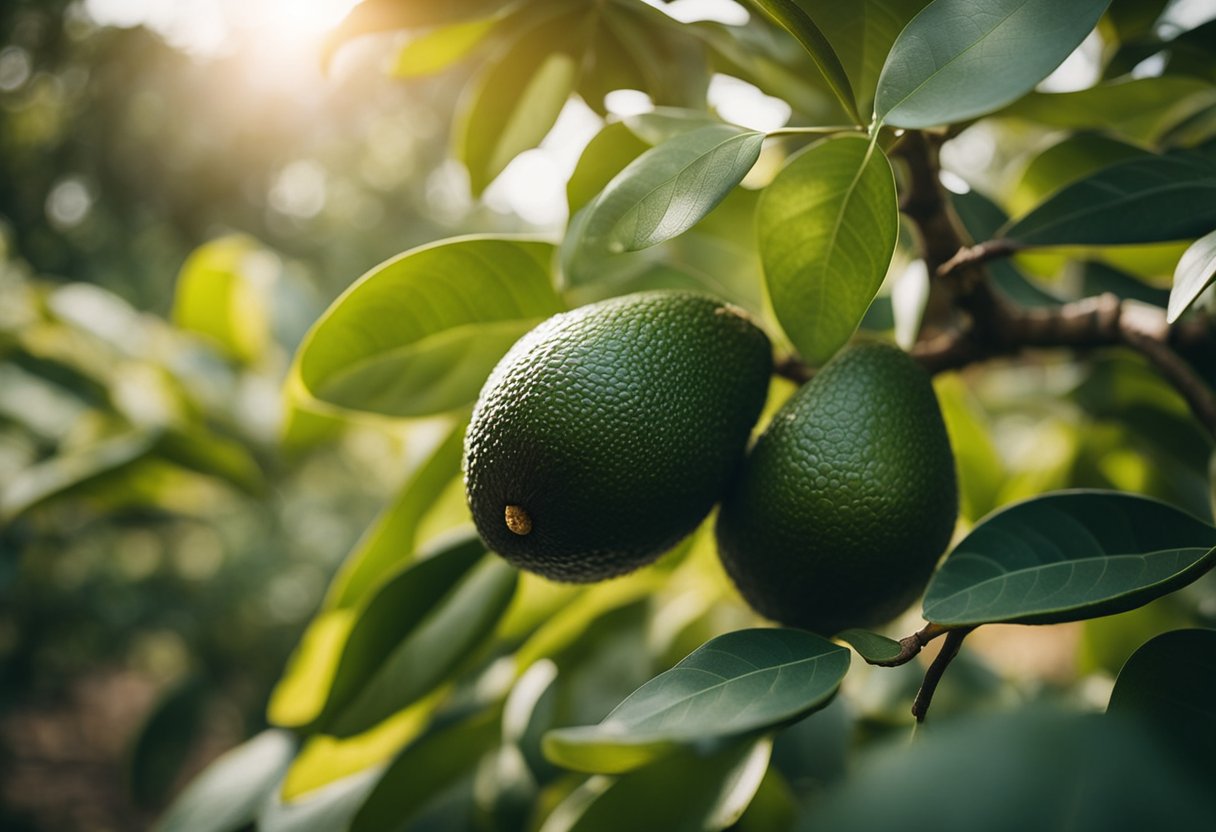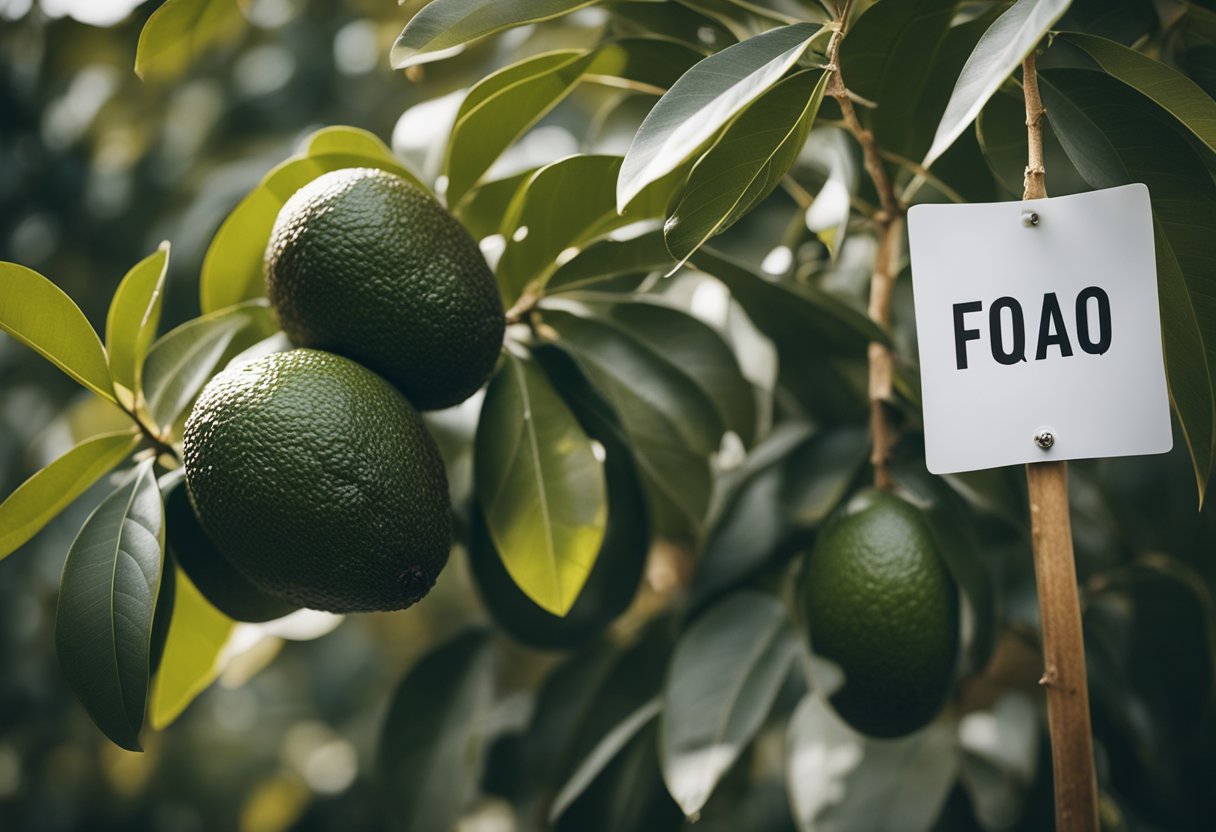Avocado trees are a popular choice for homeowners who want to add a touch of greenery to their property. However, the leaves of these trees can sometimes turn brown, which can be a sign of a problem. In this article, I will discuss the reasons why avocado tree leaves turning brown and what you can do to fix the problem.

Understanding Avocado Tree Leaves Turning Brown There are several reasons why avocado tree leaves may turn brown. One of the most common reasons is salt accumulation in the soil. When the soil contains too much salt, it can cause the leaves to turn brown and dry out. Another reason is inadequate watering, which can cause the leaves to wilt and turn brown.
Diagnosing the Problem To diagnose the problem, you’ll need to examine the tree closely. Look for any signs of pests, disease, or damage to the tree. Check the soil to see if it’s too dry or too wet. You may also want to test the soil to see if it contains too much salt.
Key Takeaways
- Avocado tree leaves may turn brown due to salt accumulation or inadequate watering.
- Diagnosing the problem requires a close examination of the tree and soil.
- Treatment may involve adjusting watering habits, adding fertilizer, or consulting a professional.
Understanding Avocado Tree Leaves Turning Brown
Avocado trees are known for their lush green leaves, but sometimes, they can turn brown. As an AI language model, I’ve done some research and found out that there are several reasons why avocado tree leaves turn brown. In this section, I will discuss the common causes of browning leaves, environmental stress factors, nutrient deficiencies, and watering issues.
Common Causes of Browning Leaves
One of the most common causes of browning leaves in avocado trees is salt accumulation. Avocado trees are sensitive to salt, and when the soil becomes too salty, it can cause the leaves to turn brown. Another common cause of browning leaves is anthracnose, a fungal disease that can cause leaf spots and browning.
Environmental Stress Factors
Environmental stress factors such as extreme temperatures, wind, and drought can also cause avocado tree leaves to turn brown. During hot and dry weather, avocado trees may not receive enough water, causing the leaves to dry out and turn brown. Wind can also dry out the leaves, causing them to turn brown and brittle.
Nutrient Deficiencies
Nutrient deficiencies can also cause avocado tree leaves to turn brown. Avocado trees require a balanced amount of nutrients to grow healthy leaves. If the tree is lacking in certain nutrients such as nitrogen, magnesium, or iron, it can cause the leaves to turn brown.
Watering Issues
Watering issues can also cause avocado tree leaves to turn brown. Overwatering or underwatering can cause the leaves to turn brown and fall off. It’s important to water avocado trees regularly, but not too much or too little.
Avocado tree leaves turning brown can be caused by several factors such as salt accumulation, environmental stress factors, nutrient deficiencies, and watering issues. By identifying the underlying cause of the problem, you can take the necessary steps to prevent it from happening in the future.
Diagnosing the Problem
As an avocado tree owner, it’s essential to know how to diagnose the problem when your avocado tree leaves start turning brown. The following are some visual inspection tips, soil testing, and leaf sample analysis that can help you determine the cause of the problem.
Visual Inspection Tips
The first step in diagnosing the problem is to conduct a thorough visual inspection of your avocado tree. Check the leaves, trunk, and branches for any signs of damage, pests, or disease. Look for brown spots, yellowing, or wilting leaves. If you notice any of these symptoms, it could be a sign of water stress, nutrient deficiency, or disease.
Soil Testing
The next step is to test the soil for nutrient deficiencies and pH levels. Avocado trees require well-draining soil with a pH between 6 and 7. If the pH is too high or low, it can affect the tree’s ability to absorb nutrients from the soil. Testing the soil can help you determine if you need to adjust the pH or add any nutrients to the soil.
Leaf Sample Analysis
If you’re still unsure of the cause of the problem, you can take a leaf sample to a local agricultural extension office or lab for analysis. The lab can conduct a nutrient analysis and check for any signs of disease or pests. This can help you determine if there are any nutrient deficiencies or if the tree is suffering from a disease or pest infestation.
By following these steps, you can diagnose the problem and take the necessary steps to treat your avocado tree. Remember to water your tree regularly, provide adequate nutrients, and monitor for any signs of pests or disease.
Treatment and Management
If your avocado tree leaves are turning brown, there are various ways to treat and manage the issue. Here are some of the most effective methods:
Adjusting Watering Practices
One of the most common reasons avocado tree leaves turn brown is due to inadequate watering practices. Avocado trees need a consistent supply of water to thrive, especially during hot and dry weather. If you notice brown leaves, check the soil moisture level and adjust your watering practices accordingly. Ensure that the soil is moist but not waterlogged, as this can also cause brown leaves.
Correcting Nutrient Imbalances
Avocado trees need a balanced supply of nutrients to grow healthy leaves. If the leaves are turning brown, it may be due to a nutrient deficiency or excess. Conduct a soil test to determine the nutrient levels and adjust your fertilization practices accordingly. Too much fertilizer can cause salt buildup in the soil, which can lead to brown leaves.
Addressing Pest and Disease Issues
Pests and diseases can also cause brown leaves in avocado trees. Common pests that attack avocado trees include mites, thrips, and scale insects. Diseases such as root rot, anthracnose, and bacterial canker can also cause brown leaves. Inspect your tree regularly and take appropriate measures to control pests and diseases. Use organic methods such as neem oil, insecticidal soap, and copper fungicides to control pests and diseases.
Treating and managing brown leaves in avocado trees requires a combination of proper watering practices, balanced nutrient supply, and pest and disease control. By implementing these methods, you can restore your avocado tree’s health and prevent further damage.
Preventative Measures

As an avocado tree owner, there are several preventative measures you can take to keep your tree healthy and prevent avocado leaves from turning brown.
Proper Planting Techniques
One of the most important preventative measures is to ensure that you plant your avocado tree correctly. When planting, make sure that the hole is deep enough for the roots to spread out and that the soil is well-drained. It is also important to avoid planting the tree too close to other plants or structures, as this can limit its access to sunlight and nutrients.
Regular Maintenance Schedule
Regular maintenance is also crucial in preventing avocado leaves from turning brown. This includes regular watering, fertilization, and pruning. Avocado trees need to be watered deeply but infrequently, and it is important to avoid overwatering. Additionally, fertilization should be done regularly but in moderation, as over-fertilization can cause damage to the tree. Pruning should be done annually to remove dead or damaged branches and to promote healthy growth.
Environmental Control Strategies
Environmental factors can also contribute to avocado leaves turning brown. To prevent this, it is important to control the tree’s environment as much as possible. This includes providing adequate shade during hot weather, protecting the tree from strong winds, and ensuring that the soil is well-drained. Additionally, it is important to monitor the tree for signs of pests or disease and to take appropriate action if necessary.
By following these preventative measures, you can help ensure that your avocado tree remains healthy and that its leaves stay green and vibrant.
When to Consult a Professional

As an avocado tree owner, it’s important to know when to seek professional help for your tree. While there are many things you can do to prevent avocado leaves from turning brown, sometimes the problem is too big for you to handle on your own. Here are some instances when it’s best to call in a professional:
- Pest infestations: If you notice that your avocado tree has a pest problem, it’s best to consult a professional. They can help you identify the type of pest and recommend the appropriate treatment to get rid of them. Some common pests that can cause avocado leaves to turn brown include mites, thrips, and scale insects.
- Disease outbreaks: Avocado trees are susceptible to a variety of diseases that can cause the leaves to turn brown. If you suspect that your tree has a disease, it’s best to consult a professional. They can diagnose the problem and recommend a treatment plan to help your tree recover.
- Frost damage: If you live in an area that experiences frost, your avocado tree may be at risk of frost damage. If you notice that the leaves on your tree are turning brown after a frost, it’s best to consult a professional. They can assess the damage and recommend the appropriate course of action.
- Nutrient deficiencies: If your avocado tree is not getting the right nutrients, the leaves may turn brown. If you’ve tried adjusting the soil pH and fertilizing your tree but the problem persists, it’s best to consult a professional. They can test the soil and recommend the appropriate nutrients to help your tree thrive.
If you’re unsure about how to handle a problem with your avocado tree, it’s best to consult a professional. They have the knowledge and expertise to diagnose the problem and recommend the appropriate treatment to help your tree recover.
Related Posts:
How Big Do Avocado Trees Grow? Height and Spread Explained
Avocado Tree Growth Stages: Understanding the Life Cycle
Frequently Asked Questions
What causes avocado tree leaves to turn brown and fall off?
There are several reasons why avocado tree leaves might turn brown and fall off. One of the most common reasons is overwatering or underwatering the plant. Other factors that can cause brown leaves include nutrient deficiencies, pest infestations, and exposure to extreme temperatures.

How can I tell if my avocado plant is overwatered?
Overwatering is a common cause of brown leaves on avocado trees. You can tell if your plant is overwatered by checking the soil moisture level. If the soil is consistently wet or waterlogged, your plant is likely being overwatered. Additionally, overwatering can cause the roots to rot, which can lead to brown leaves.
What should I do with brown leaves on my avocado tree?
If you notice brown leaves on your avocado tree, you should remove them as soon as possible. This will help prevent the problem from spreading to other parts of the plant. You should also examine the plant for any signs of pest infestations or nutrient deficiencies, as these can also cause brown leaves.
Why are my avocado tree leaves drying up and appearing crispy?
Drying and crispy avocado tree leaves are often caused by exposure to extreme temperatures or low humidity levels. In some cases, nutrient deficiencies can also cause the leaves to dry up. To prevent this problem, you should make sure your plant is getting enough water and is not exposed to extreme temperatures.
Can a dying avocado plant be revived, and if so, how?
If your avocado plant is dying, it may be possible to revive it depending on the severity of the problem. You should start by examining the plant for any signs of pest infestations or nutrient deficiencies. If the problem is caused by overwatering, you should reduce the amount of water you are giving the plant. If the plant is severely damaged, you may need to consider replacing it.
What are the signs of nutrient deficiency in avocado trees?
Nutrient deficiencies can cause a range of problems in avocado trees, including brown leaves, stunted growth, and poor fruit production. Common signs of nutrient deficiencies include yellowing leaves, leaf curling, and leaf drop. If you suspect your plant has a nutrient deficiency, you should have the soil tested to determine which nutrients are lacking and adjust your fertilization accordingly.
